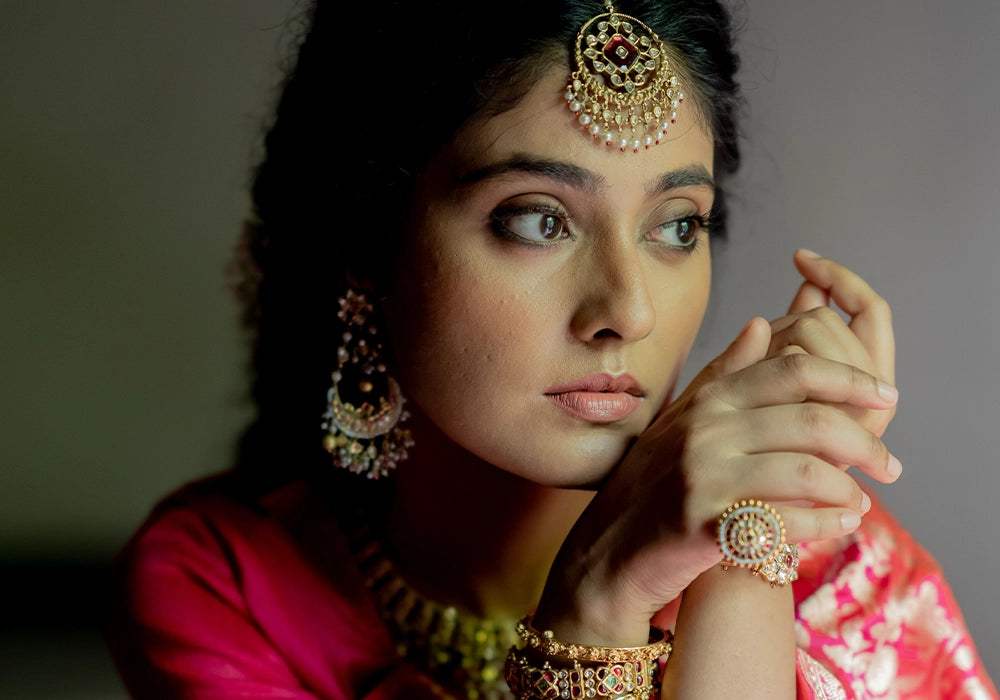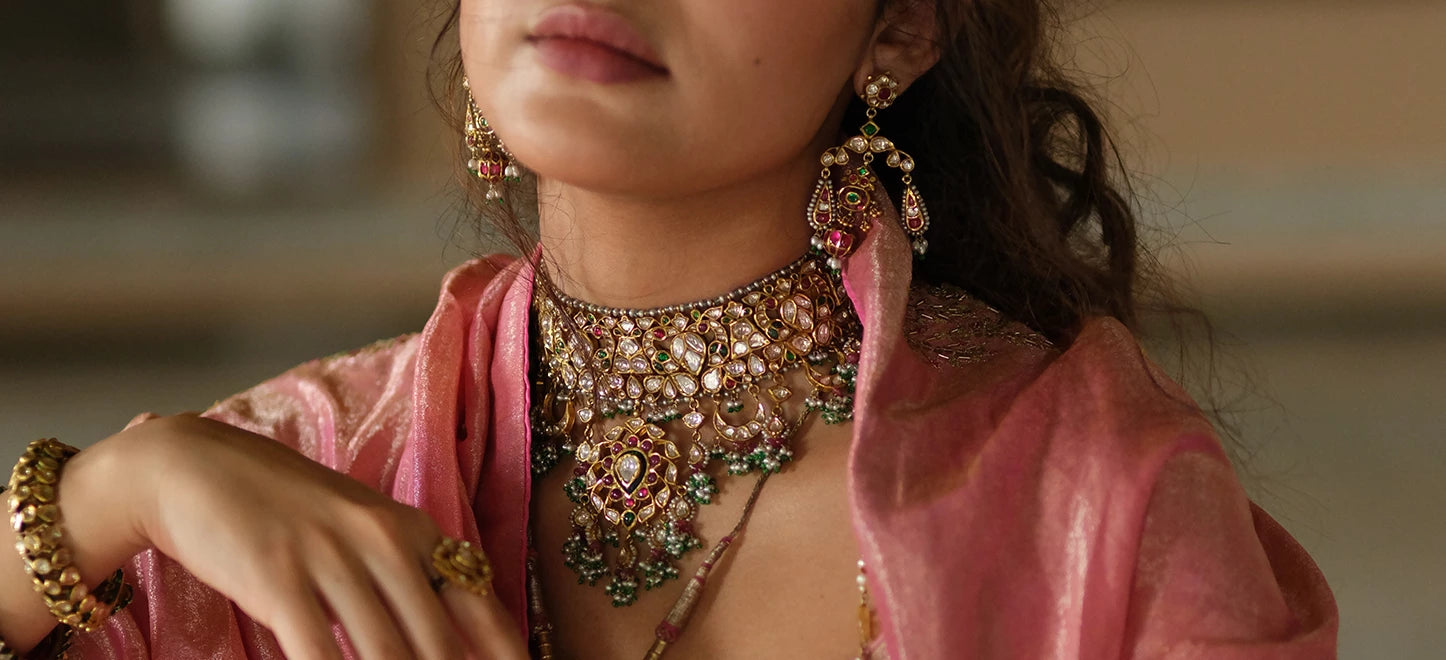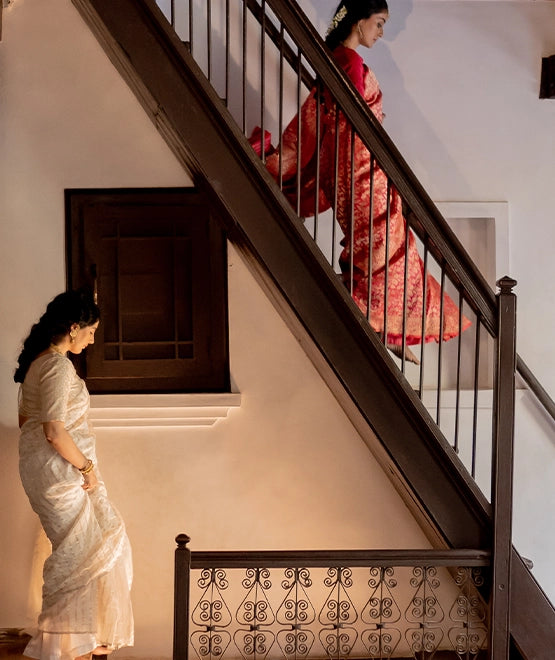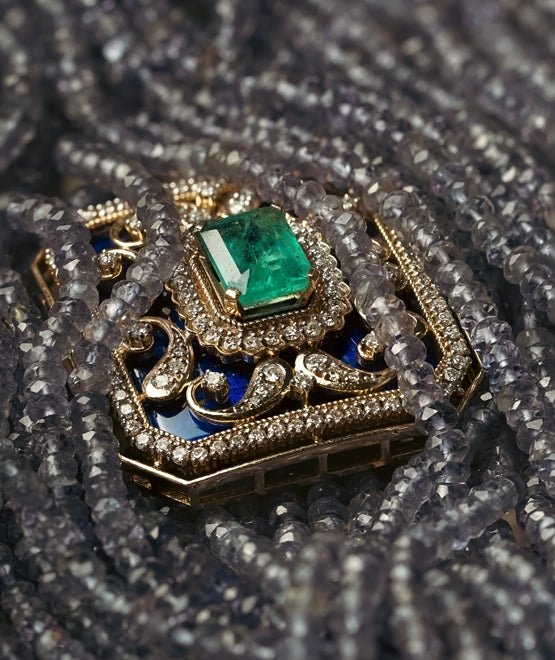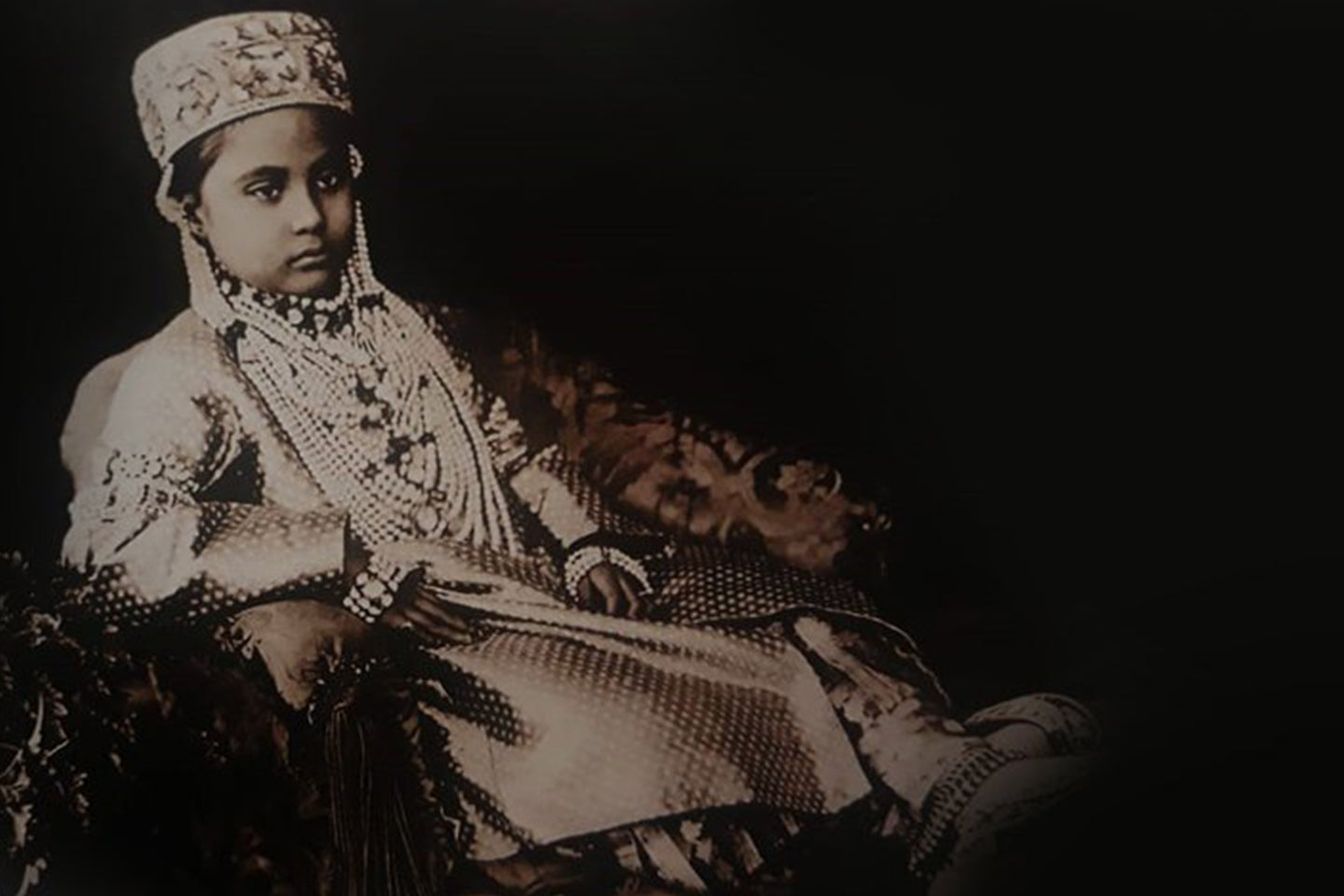This Tuesday found me heading to Delhi to see the Nizam’s Jewellery Collection, an amalgamation of jewels unparalleled in its sheer value and size. The entire collection was familiar to me as I have referred to the catalog several times in the past years for my work, but what awaited me was something I had not anticipated.
Ushered into a enormous room-like vault, there lay gleaming before me window after window of the finest Golconda diamonds (almas), Colombian emeralds (zamarrud), Basra pearls (marvareed), spinels (yakhoot), Kashmiri Sapphires (Neelam) etc so magnificent in size, brilliant in quality and set in some of the most beautiful ornaments that I have ever seen! It was one thing to see these jewels in a book and an another- an experience so enthralling that words cannot explain, to see them in flesh and colour.

Ushered into a enormous room-like vault, there lay gleaming before me window after window of the finest Golconda diamonds (almas), Colombian emeralds (zamarrud), Basra pearls (marvareed), spinels (yakhoot), Kashmiri Sapphires (Neelam) etc so magnificent in size, brilliant in quality and set in some of the most beautiful ornaments that I have ever seen! It was one thing to see these jewels in a book and an another- an experience so enthralling that words cannot explain, to see them in flesh and colour.

To say that the Nizam’s Jewellery Collection has been a source of constant inspiration for jewelers worldwide would be very acceptable. There has been a constant give and take of inspiration- in terms of the design language and the techniques used, between India and the west. And here are a few of my observations:
Pachikaam
Pachchikam in Hindi means peeche or back since this type of jewellery had gold on the rear and silver in front. The overall appearance of Pachchikam comes across as rather delicate and unfinished.The reason that silver is used is because it is extremely malleable and it also gives a close resemblance to the precious metal platinum.
This craft owes its origins to Gujarat and Kutch but its beginning can be traced to early European designs worn by the nobility in the 16th century. A few pieces in the Nizam’s collection can be attributed to this technique and the probable reason to have used this technique would be to create jewels that would accurately show the brilliance of the diamonds used.
This craft owes its origins to Gujarat and Kutch but its beginning can be traced to early European designs worn by the nobility in the 16th century. A few pieces in the Nizam’s collection can be attributed to this technique and the probable reason to have used this technique would be to create jewels that would accurately show the brilliance of the diamonds used.

Bird on the Rock
Sarpench Bachkani Almas Kanval Wa Munni Zammarrud, made for Mahboob Ali Pasha, the sixth Nizam, who ascended the throne when he was two-and-a-half-years-old is a beautiful turban ornament made in gold and set with diamonds, emerald beads and cabochon rubies. Made in the mid 19th century, the iconography of the bird perched on the centre stone appears very similar to the Bird on the Rock designed by Jean Schlumberger for Tiffany’s in the mid 20th century (refer to our blog about the Tiffany diamond here https://www.aurusjewels.com/blogs/news/the-world-of-yellow-diamonds)
The Nizam’s sarpench has the motif of a heraldic eagle perched on a diamond, whereas the bird depicted by Schlumberger is completely different, but the resemblance in the iconography is very uncanny and the possibility of one acting as an inspiration for the other cannot be ruled out.


Tiger Buckle (Baglus Almas Sher)
Mahboob Ali Pasha, the sixth Nizam was a keen hunter, well known for the exciting hunts that he frequently organized. Innumerable members of European royalty visited Hyderabad to participate in his lavish shoots. It is likely that this tiger buckle, in the form of a rectangular plaque with an applied design of a tiger encrusted with small diamonds and a ruby eye, standing amidst foliage set with diamonds, was made for him. The tiger design is of European inspiration.
We see a lot of felines depicted in jewellery during Jeanne Toussaint’s directorship at Cartier from 1933 and tracing parallels to the tiger buckle can be considered.


https://edition.cnn.com/style/article/opulent-legacy-of-the-cartier-panther/index.html
Lastly, talking about diamonds, the Golconda mines in the Deccan plateau yielded some of the finest quality of diamonds and a lot of the important diamonds in the world like the Kohinoor, the Hope, Dresden, Orloff, Sancy etc came from here. The Golconda diamonds are characterised as Type-ll A quality stones which are very sought after for their remarkable purity, brilliance and luster.
Lastly, talking about diamonds, the Golconda mines in the Deccan plateau yielded some of the finest quality of diamonds and a lot of the important diamonds in the world like the Kohinoor, the Hope, Dresden, Orloff, Sancy etc came from here. The Golconda diamonds are characterised as Type-ll A quality stones which are very sought after for their remarkable purity, brilliance and luster.

And in the centre of the room, at the National Museum exhibit, stood the Jacob diamond, commanding all the attention of the viewer. There is an interesting story of how this diamond, named after Jacob- the dealer from Simla who sold it to the Nizam, was actually acquired. I will not get into that story for now, but a far more amusing fact that caught my fancy is this-
The world was coveting Golconda diamonds, that were coming out of mines controlled by the Nizams, and all the Nizam collection’s diamonds also came from Golconda-
Well all except the biggest stone in their collection- the Jacob Diamond!
This stone was mined in South Africa!
And such was the irony...!
And that probably explains why later when the diamond was found, it was wrapped in old tatters, probably being used as a paperweight. On a lighter note, maybe the Nizam thought- anything, not a Golconda was not as valuable, so not good enough.
AURUS has always been inspired by the exquisite allure of the jewels of the Nizams... here's how we have translated it..




Source : Jewels of the Nizams by Usha R. Balakrishnan
